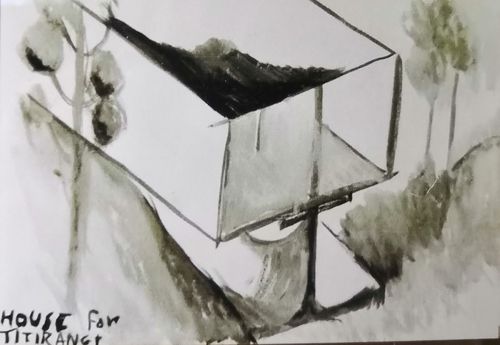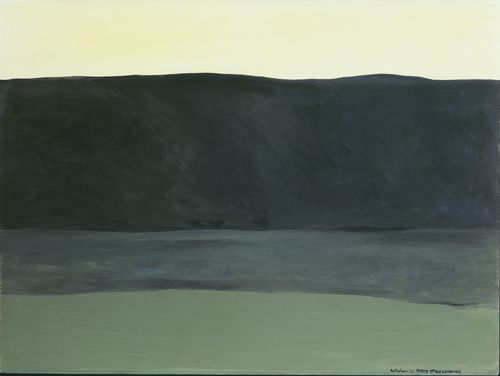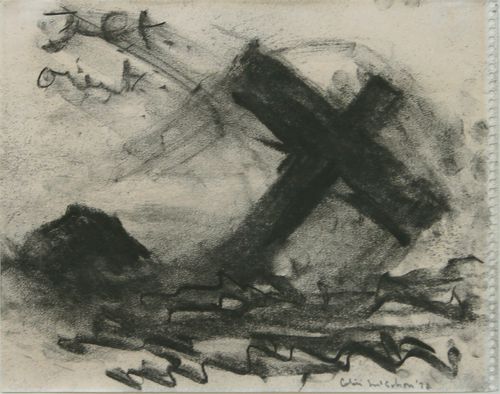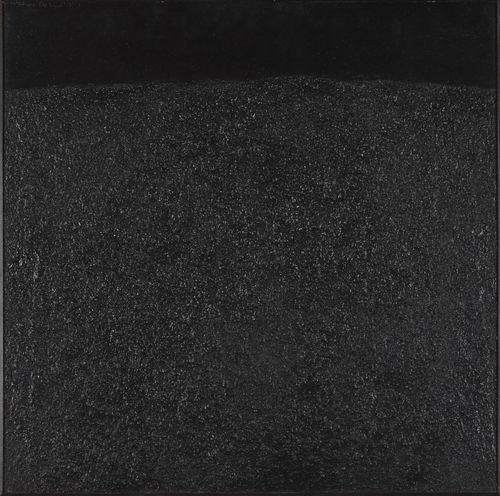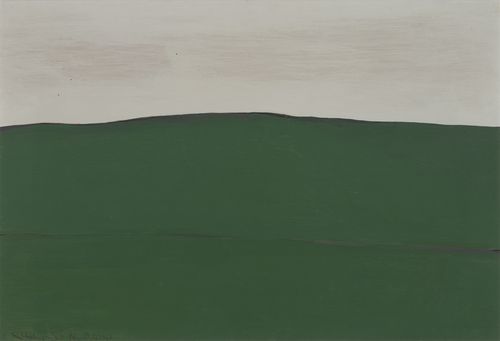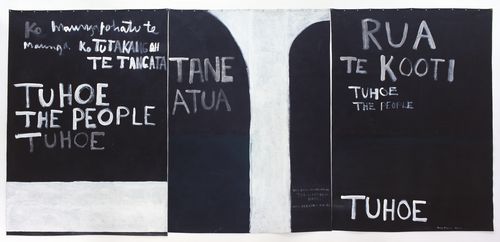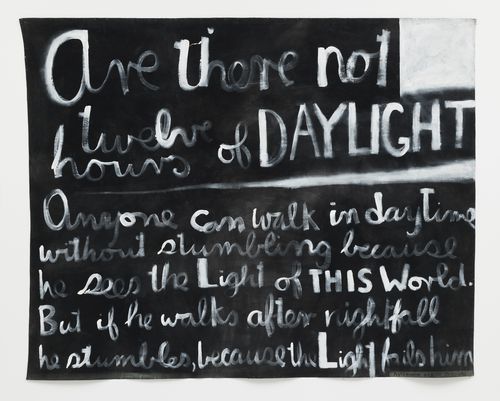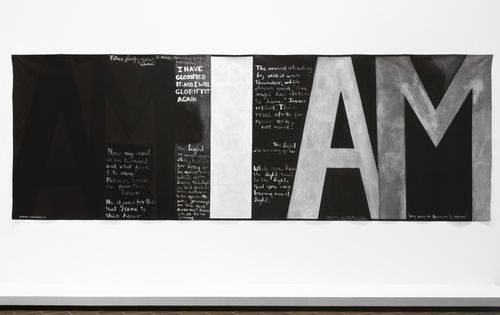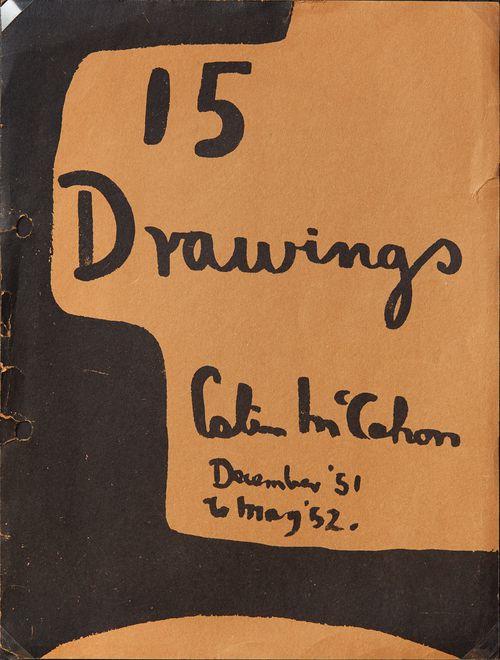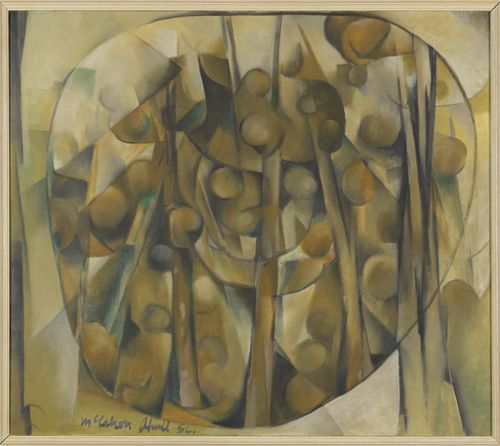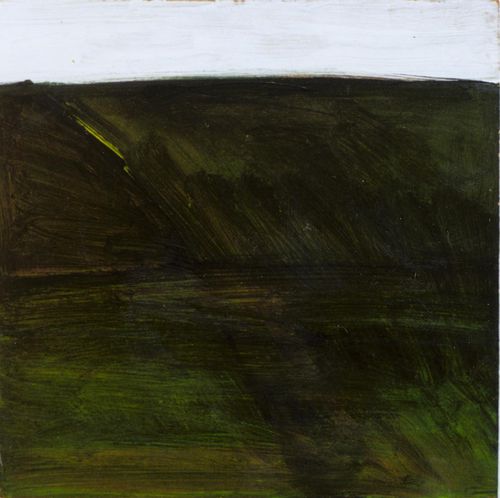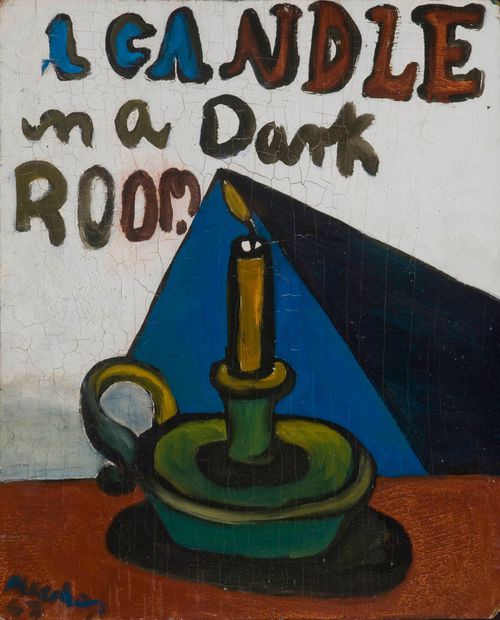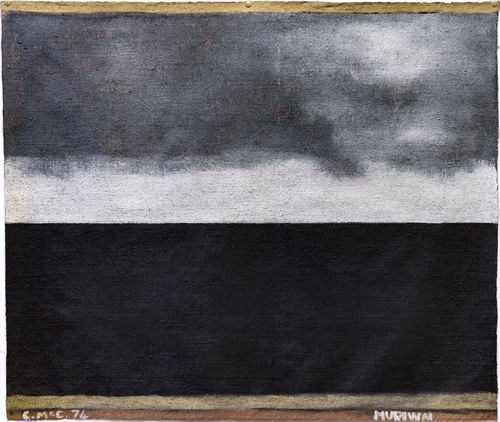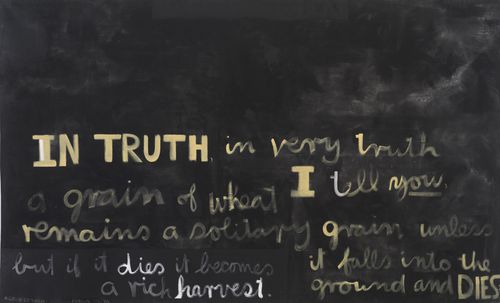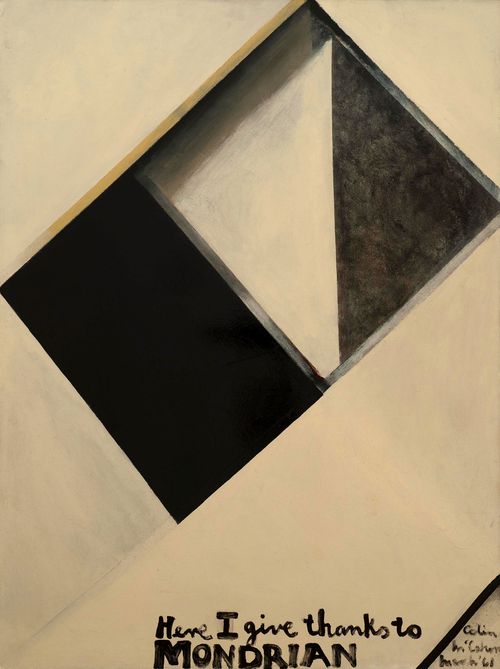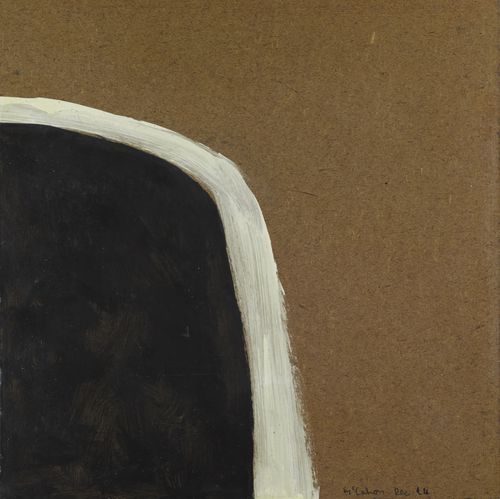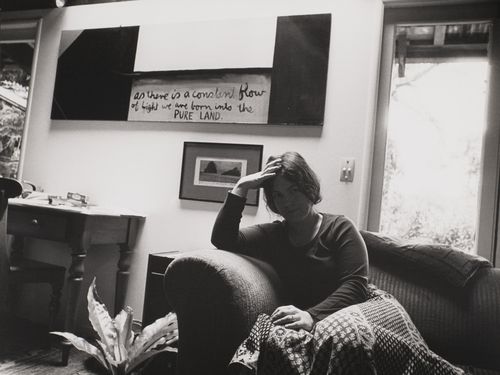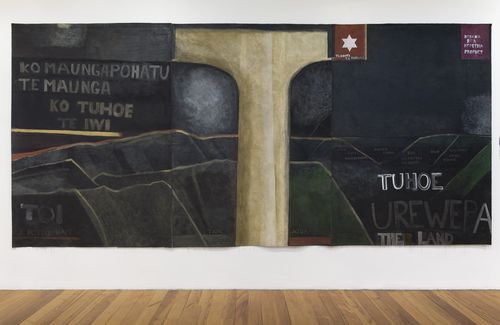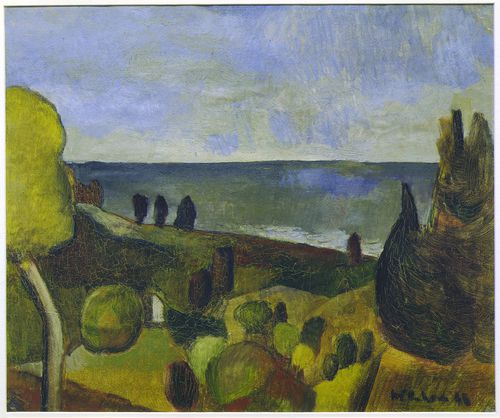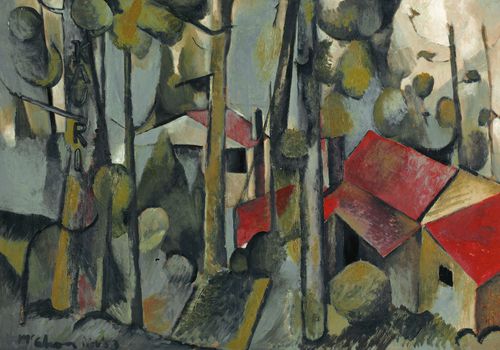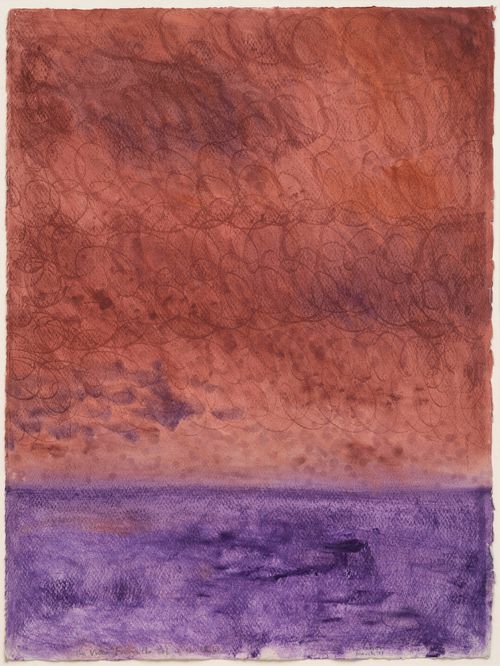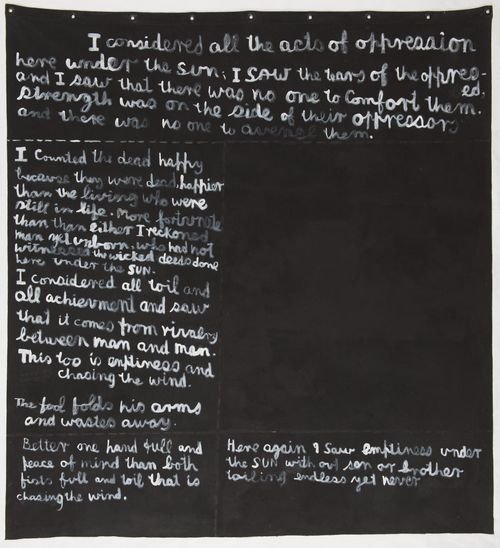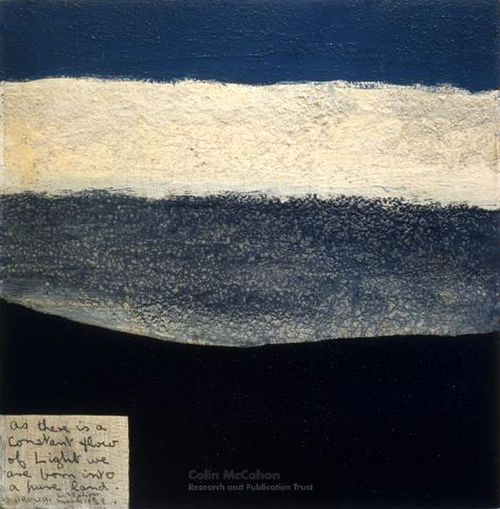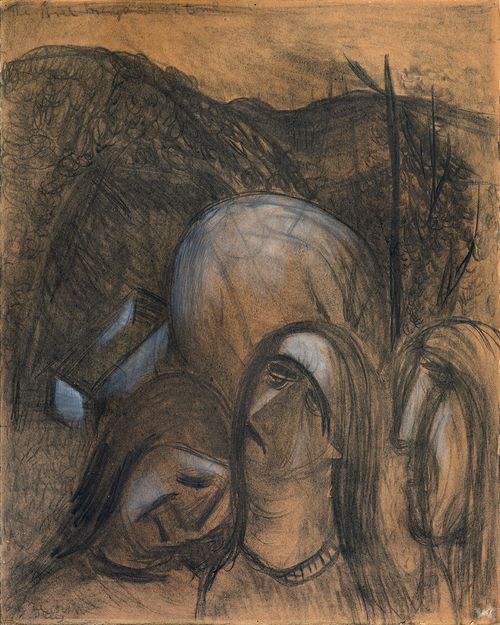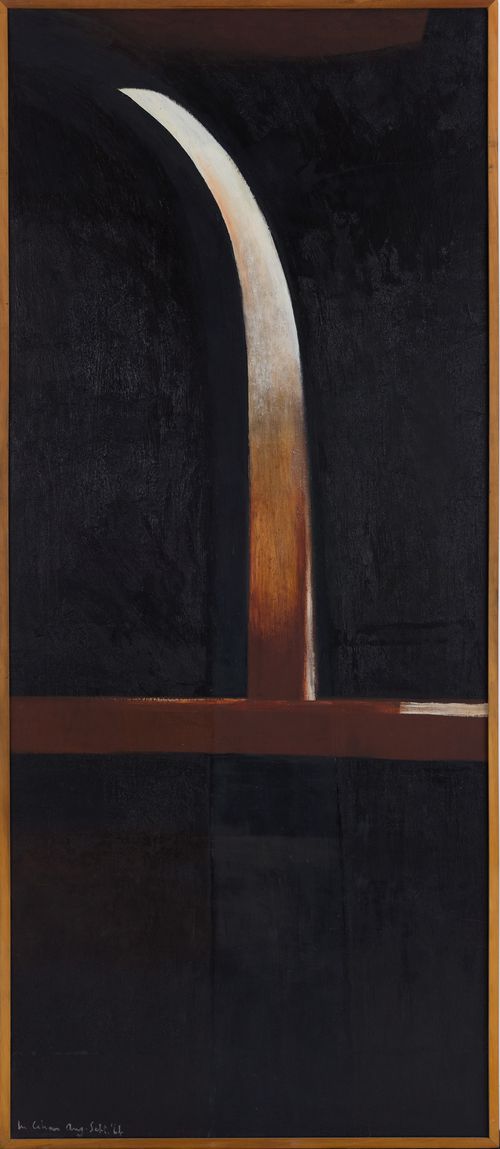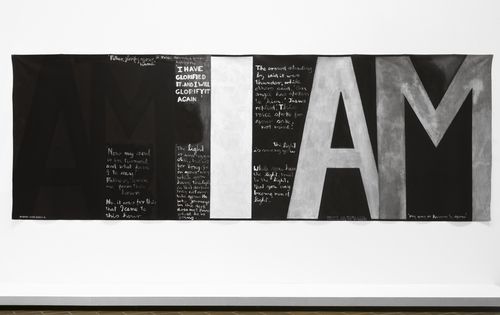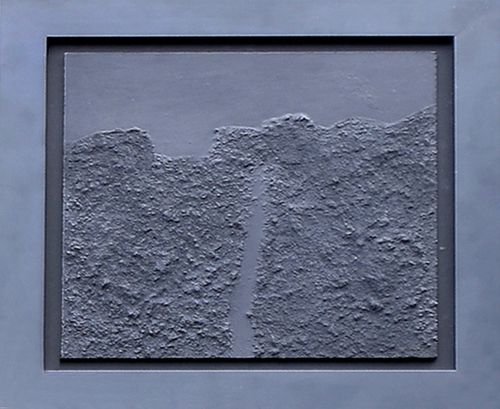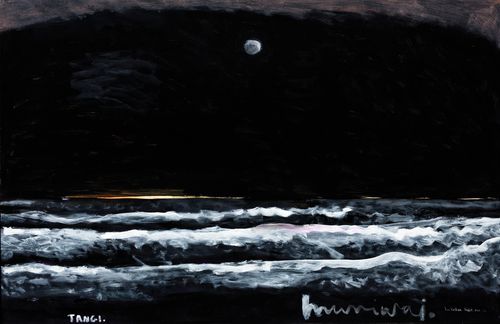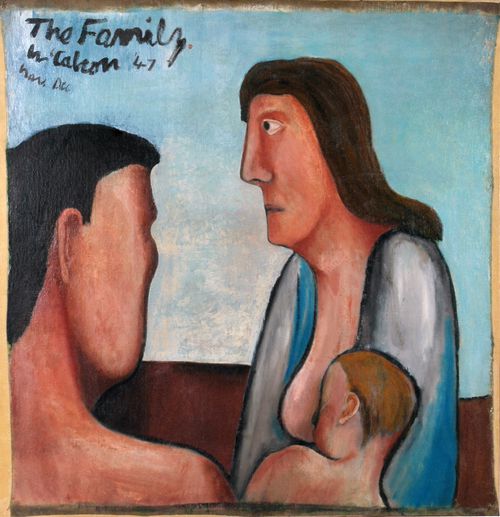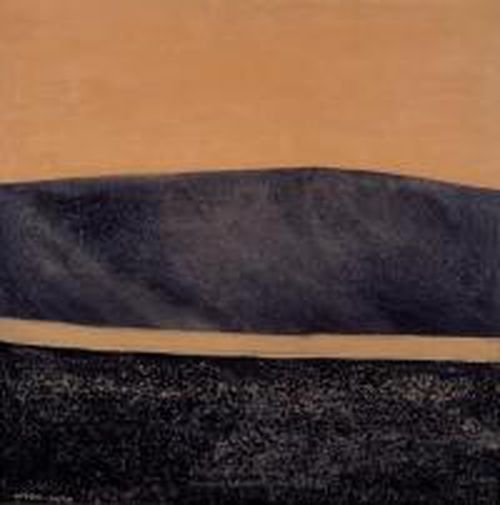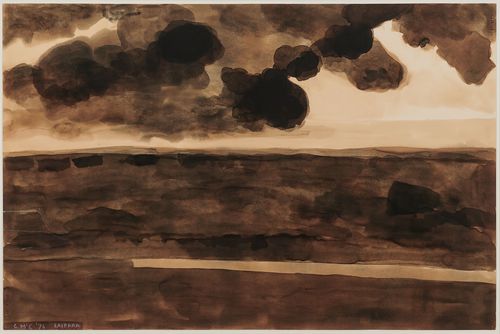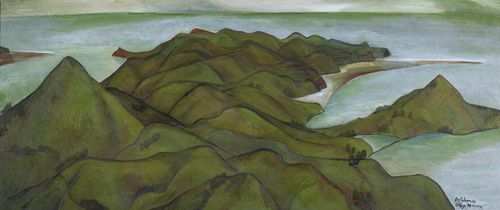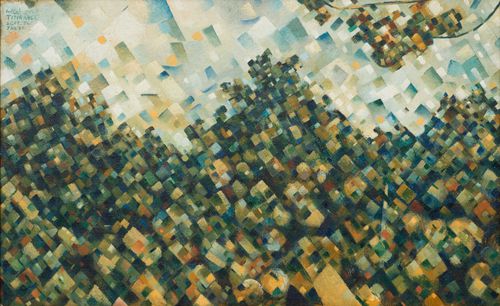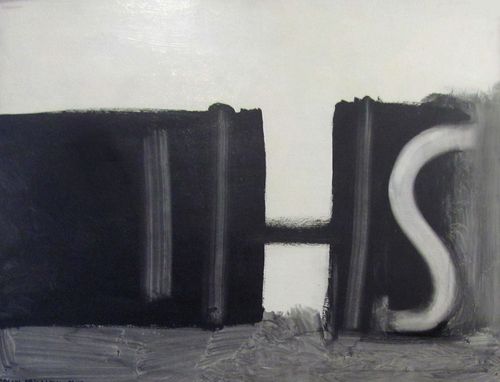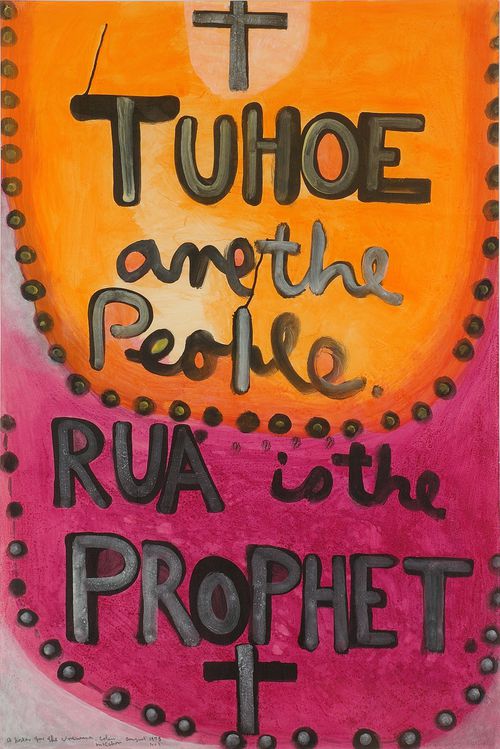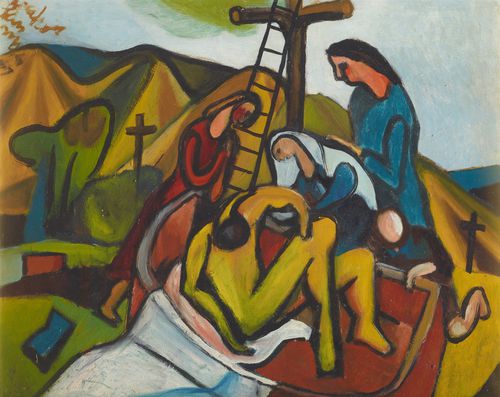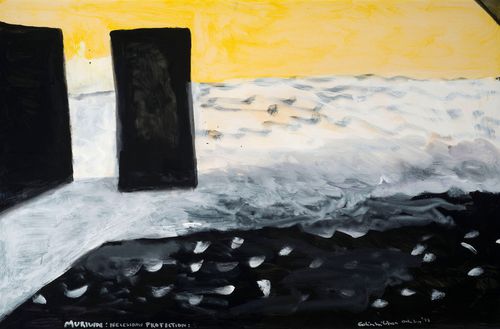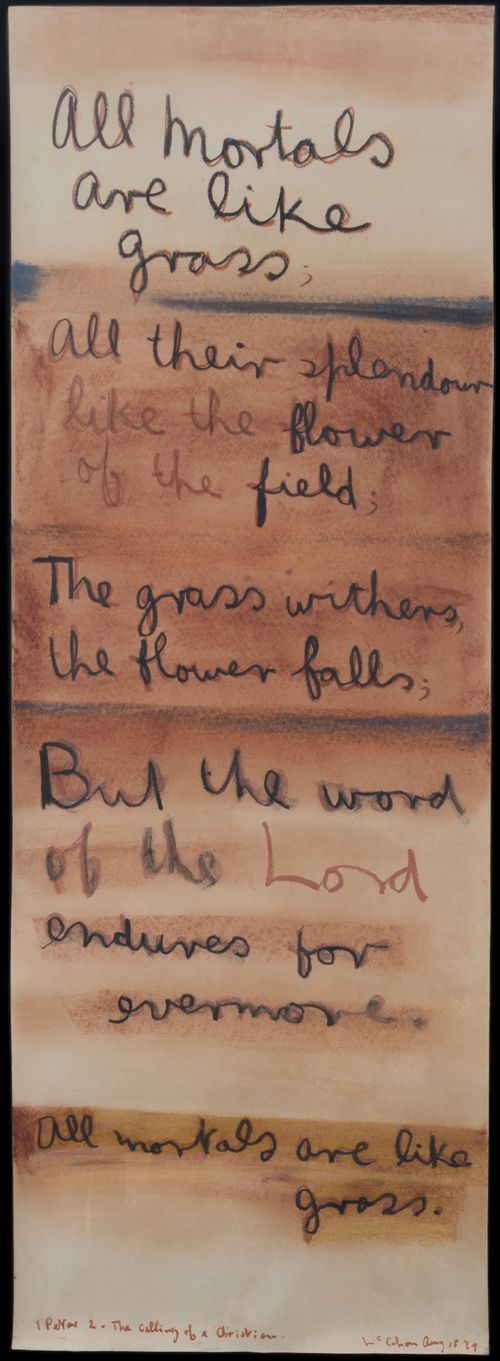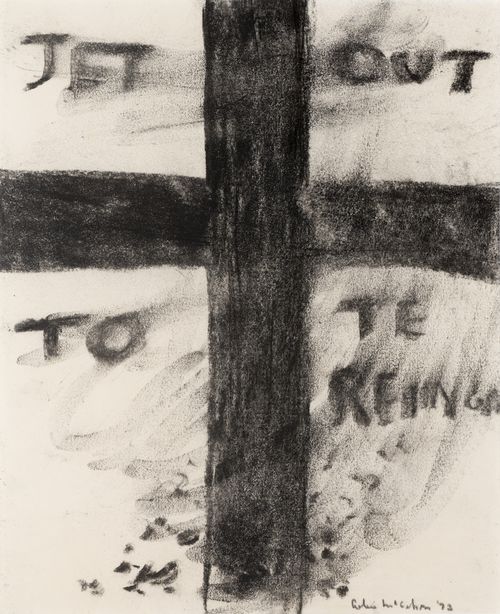Victory over Death 2
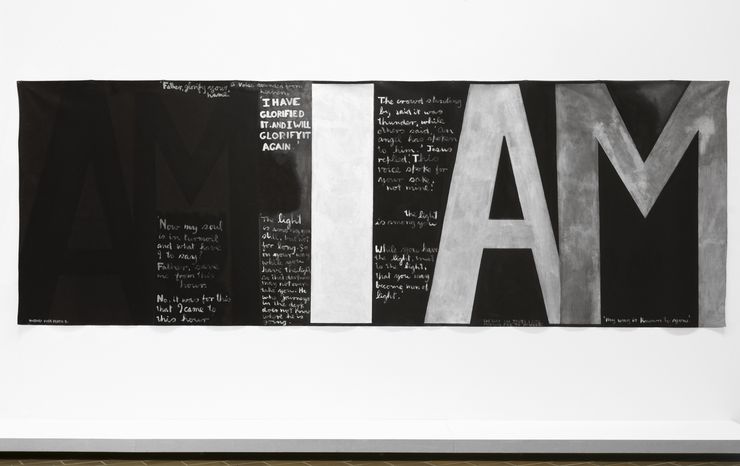
Victory over death 2, 2075 x 5977, synthetic polymer paint, 1970. Collection National Gallery of Australia, gift of the New Zealand Government 1978, courtesy McCahon Research and Publication Trust
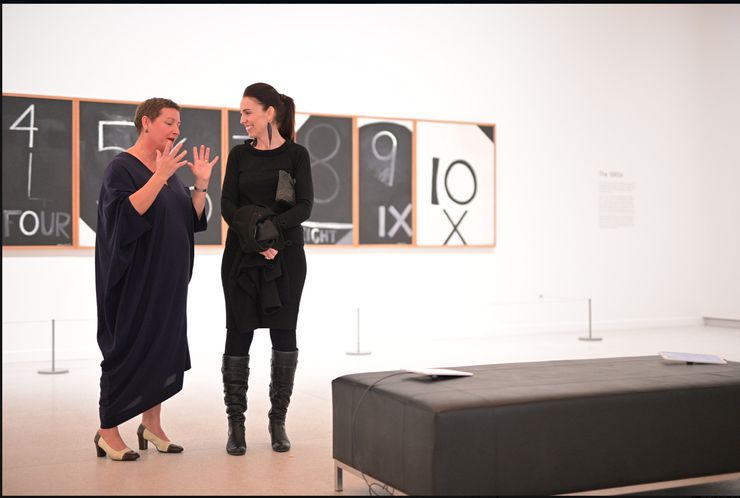
McCahon House Director Vivienne Stone and Prime Minister the Rt Honorable Jacinda Ardern in front of Colin McCahon's Numerals on the occasion of the launch of the McCahon Centenary, Auckland Art Gallery Toi o Tāmaki, August 2019
Rt Hon Jacinda Ardern
Colin McCahon once said of painting white upon black, “I look back with joy on taking a brush of white paint and curving through the darkness with a line of white.”1
And that’s what McCahon did – he continually exposed and challenged the darkness.
There is no doubt that McCahon is one of New Zealand’s most important modern artists and paved the way for his contemporaries and those who followed him. However, McCahon’s legacy goes much further and for me, Victory over death 2 encapsulates that intangible impact an artist can have; the ripples they can create.
On the face of it McCahon’s Victory over death 2 sends a clear and defiant message – I AM. Emerging from the velvety black paint, on the left-hand side the word ‘AM I‘ (with the questioning AM in the shadows) are set against the affirmative ‘I AM’ which is painted in answer. As Deborah Hart, Senior Curator at the National Gallery of Australia explains, this dialogue within the canvas references the strong voice of God, and the phrase ‘I AM’ is a regular occurrence in McCahon’s work, referencing both the questions and reassurances of personal identity and faith. The answer, ‘I AM’ is visually louder and stronger than the question ‘AM I ’, and asserts an identity of its own. Ambiguity turns to clarity and there is a sense of realisation and revelation in the words.
McCahon grappled with religion in a range of his works, and the moment I first discovered this was at the very moment I was grappling with my own belief system.
A collection of his works hung on Wellington walls, telling the story of his own faith. Colourful images descend into blackened canvases with works and statements almost punching through.
Victory over death 2 captures that time and experience; but also McCahon himself, what he confronted, what he challenges us to confront, and perhaps, our incomplete appreciation of him and his works.
Of course, Victory over death 2 is a bit of an outlier because it is not housed in a New Zealand museum or gallery. My ministerial colleague, Hon Grant Robertson, has already mentioned in his contribution to this project the controversy that ensued when the New Zealand Government gifted Victory over death 2 to the National Gallery of Australia, in Canberra.2 Although a small group of people had suggested our (then) National Gallery should purchase the work, this did not go ahead. Clearly there was a level of hesitation around McCahon’s practice, and very few at the time understood the power and strength in his work.
McCahon’s influence on the contemporary New Zealand art scene is clear through the McCahon 100 project, the residencies the McCahon House Trust host, and the individual artists that respond directly to his work in their own.
The culmination of McCahon’s influence is evidenced by the entire McCahon centenary, and the numerous people who have engaged with it. It is wonderful to see the contributions about McCahon and his work from art historians, curators, artists, critics, sporting legends, fashion designers and writers sitting alongside each other. And personally, I am humbled to be the second politician to make a contribution – but I do so as simply one of many people who have been moved by McCahon.
[1] Words from McCahon himself https://nationalgallery.com.au/mccahon/1.cfm#_edn1
